
Star Wars: The Rise of Skywalker closes a monumental chapter in pop culture history. We're not just talking about the resolution of the Skywalker storyline itself, but also composer John Williams, whose association with the Star Wars franchise is set to come to an end.
The word illustrious barely covers Williams' extraordinary contribution to the franchise. Since it began in 1977, he has provided the series with its emotional heart, conjuring any number of memorable themes that add to our understanding of the characters and the universe in which they operate.
To celebrate Star Wars Day (May the 4th), we've embarked on the (admittedly intimidating) task of ranking his greatest tracks, drawn from the original, prequel and current trilogies. Will your favourite come out on top? Scroll down to find out.
24. 'Scherzo for X-Wings' (The Force Awakens)
By the time The Force Awakens arrived in 2015, John Williams had been associated with the franchise for 38 years. But far from experiencing creative burnout, he tacked JJ Abrams' triumphant Star Wars resurrection with the kind of zeal and enthusiasm befitting a person half his age.
At this stage, Williams earned the right to become creative with his deployment of the opening crawl fanfare, and its thrilling application during the climactic assault on Starkiller Base, surging forward with propulsive, brass-led heroism, had us all grinning from our cinema seats.
23. 'The Birth of the Twins and Padme's Destiny' (Revenge of the Sith)
Arguably the darkest and most despairing score in the Star Wars canon, Revenge of the Sith broils with a sense of impending tragedy. This is hardly a surprise: Williams is taking a cue from George Lucas himself, as he anticipates the mental and physical destruction of Anakin Skywalker (Hayden Christensen) before he's reborn as Darth Vader.
As events click into place during the climax, and the doomed Padme (Natalie Portman) gives birth to the soon-to-be-separated Luke and Leia, Williams does a superb job mingling anguish and hope. As the music bids farewell to Padme, strains of the noble Force theme anticipate the adult duo's eventual triumph in saving the galaxy.
22. 'The Fathiers' (The Last Jedi)
Opinions rage as to the relevance of the Canto Bight scene in The Last Jedi. But there's no denying the characteristic exuberance of Williams' music, particularly when Rose (Kelly Marie Tran) and Finn (John Boyega) break out the fathiers from their pens, causing the creatures to go on the rampage.
Appropriately enough, the stirring string/brass arrangements surge forward in a purposeful manner that suggests galloping horses – not a surprise given the design of the fathiers themselves. It's a hugely exciting piece that recalls Williams' Western score The Cowboys, composed back in 1970.
21. 'Torn Apart' (The Force Awakens)
The Force Awakens mingles past and present in its music, as classic staples from the original trilogy blend with new character themes. The piece for the war-mongering Kylo Ren (Adam Driver) is more a motif for threatening brass and trombones, but it deepens during the pivotal stand-off scene with Ren's estranged father Han Solo (Harrison Ford).
Williams expertly depicts the battle between the light and dark side of the Force, modulating moving strings and tender harmonics before the final, shocking crescendo cements both Ren's position, and the ultimate fate of his father. It's an excellent example of musical misdirection, suggesting the possibility for change, before ultimately affirming the all-encompassing evil of the dark side.
20. 'The Battle of Crait' (The Last Jedi)
You can always rely on Williams for a musical set-piece: he has a remarkable ability not just to engage with the specificity of the scene in question, but also contextualise it within the wider context of the saga. By interweaving individual character themes around the orchestral mayhem, Williams makes it abundantly clear what's at stake, and who to root for.
The Last Jedi's climactic battle on the salt-pans of Crait gets a huge boost from Williams' accompanying score, driving forward with strings, xylophone and brass to represent the rebels as crushing trombone onslaught for the First Order marches implacably onward. Suddenly, we get a heroic intervention from Rey's (Daisy Ridley) theme, before the re-instatement of the deliriously thrilling Tie Fighter Attack gets us air-conducting from our seats.
19. 'The Immolation Scene' (Revenge of the Sith)
We've already mentioned the tragic overtones of the score for Revenge of the Sith. But few moments are as brooding or upsetting as The Immolation Scene, in which the orchestra plays at the lowest, most anguished end of its register to herald Anakin's eventual corruption by the dark side.
Williams' music appears to be calling out in anguish as Anakin is left behind by former mentor Obi-Wan Kenobi (Ewan McGregor), anticipating the horrible character transformation to come, and the glory days of the Galactic Empire.
18. 'The Battle of Endor: Part II' (Return of the Jedi)
The final assault in Return of the Jedi spans land and space, as our heroes team with the Ewoks to battle the Empire's troops, while Lando Calrissian (Billy Dee Williams) pilots the Millennium Falcon to help destroy the second Death Star. Running in parallel with this is the pivotal, emotionally-charged showdown between Luke Skywalker (Mark Hamill), his father Darth Vader (David Prowse; James Earl Jones) and the cunning Emperor Palpatine (Ian McDiarmid).
We've included this particular track from the Endor medley simply because of the stunning choral interlude (at 4:55) as Luke is tempted to the dark side by Vader's scheming. Instead of ramping up the orchestral histrionics, the composer instead throws the emphasis onto voices, giving us a palpable sense of the war raging within the fabric of the Force itself. It's a brilliant example of how to score the underlying meaning of a scene, rather than just the visuals.
17. 'Cantina Band' (A New Hope)
Did you know that John Williams first made his name as a jazz artist? He was initially credited as Johnny Williams, and provided scores for such frothy films as 1966's How To Steal A Million, starring Peter O'Toole. And those characteristics are on display in this famous piece of Star Wars source music, heard within the context of the scene (defined as 'diegetic' sound) as Luke and the older Obi-Wan (Alec Guinness) meet Han Solo in seedy Mos Eisley.
It's hardly representative of the wider tone of Star Wars, but it's one of the franchise's most easily identifiable pieces, a delightful nod to how the greatest film composer of all time first made his chops.
16. 'Anakin's Theme' (The Phantom Menace)
Musical foreshadowing is another of Williams' formidable attributes. In the first Star Wars prequel movie, The Phantom Menace, we're witness to Anakin Skywalker as an innocent young boy (portrayed by Jake Lloyd), one completely unaware of the tortured, violent future that awaits him.
Williams' music captures this duality, as lilting flute and string arrangements steadily give way to something more ominous. Slowly, we hear strains of the ominous Imperial March, the piece that defined Darth Vader in the (chronologically later) original trilogy – it crystallises an entire character's fate within the context of three minutes. It's an indication of why Williams is as revered as he is.
15. 'Across the Stars' (Attack of the Clones)
Forget the forced dialogue and stilted acting of George Lucas' maligned movie. Instead, take solace in Williams' typically faultless score, which works overtime to find sincerity and emotional depths in a script seemingly devoid of such things.
Attack of the Clones hinges on the emerging relationship between the older Anakin and Padme, and this sense of romance-tinged-with-inevitable-tragedy anchors the entire score. Williams' soaring love theme 'Across the Stars' builds a sense of swooning passion as strings, woodwind and harp swirl, giving us a sense of two characters head-over-heels in love, which only accentuates the inevitable tragedy to come.
Midway through the piece, we get a sense of this with a brooding, vaguely militaristic musical bridge that alludes to how Anakin and Padme's relationship will both define and disruption future galactic generations.
14. 'Emperor's Throne Room' (Return of the Jedi)
Williams' ability to write dark, threatening music is somewhat underrated. We're all familiar with his boisterous, major key themes of heroism and optimism (a la the Star Wars opening crawl fanfare), but he can certainly turn on the chill factor when he wants to. (Think the darkness of Jaws, Close Encounters or War of the Worlds as examples.)
The malevolent choral theme for Emperor Palpatine (Ian McDiarmid) is one of the most effective devices in the saga, utilising a deep male voice choir (almost akin to Tibetan throat-singing) to reflect the character's deep-seated affiliation with the dark side of the Force. The musically similar theme for Supreme Leader Snoke (Andy Serkis) in The Force Awakens had many viewers forging connections between the two characters – although as The Last Jedi proved, that didn't pan out as we imagined...
13. 'Zam the Assassin and the Chase Through Coruscant' (Attack of the Clones)
If the score for Attack of the Clones is defined by romance, that's not to say it holds back on the action front. Williams unleashes one of his most thunderously exciting and relentless cues during the chase through Coruscant's underbelly, as Obi-Wan and Anakin pursue Padme's would-be assassins.
The staccato brass, string and xylophone arrangements are quintessential Williams, with overtones of his action music from the original trilogy. Yet there's a new kind of density and complexity that befits the post-Jurassic Park Williams of 2002, the esteemed London Symphony Orchestra pushed to its absolute limits as the piece also works in an electric guitar to better reflect Coruscant's seedy atmosphere. Meanwhile, the occasional Taiko drum interludes clearly owe a debt to Tan Dun's Oscar-winning score from Crouching Tiger, Hidden Dragon, composed two years earlier. Across 12 incredible minutes, Williams never lets up, and never lets us catch our breath.
12. 'Rey's Theme' (The Force Awakens)
Williams was reportedly enchanted with Daisy Ridley's portrayal of Rey, the Jakku scavenger who steadily realises the potential of her Force abilities. One can clearly hear this love and affection in the theme for Rey herself, one of the musical cornerstones of the latest Star Wars trilogy.
Once again, Williams fashions an entire character journey within the course of a single cue. The piece begins with a lilting flute solo (a la Williams' score for War Horse), before steadily assembling the strings and brass in order to depict her ascent to the rank of Jedi knight. Immediately, we get a profound sense of how Rey is burdened with glorious purpose, and a classic new Star Wars musical signature is born.
11. 'Asteroid Field' (The Empire Strikes Back)
If we're talking about how John Williams can embolden and enhance a scene, look no further than the asteroid field getaway from The Empire Strikes Back. The composer brings astonishing delicacy and precision to his music, adeptly mirroring the lightning-quick piloting skills of Han Solo as he endeavours to outrun the Empire's forces.
The symmetry of the undulating woodwind arrangements, the steady unveiling of the heroic brass section as our heroes nudge closer and closer to their asteroid hideaway – it's one of the greatest action cues in the saga.
10. 'Battle of Yavin' (A New Hope)
Mark Hamill is the physical embodiment of the heroic Luke Skywalker, but it's Williams who invests the character with soul. Towards the end of A New Hope, Luke is tasked with the most dangerous mission of all: destroy the Death Star and restore hope (albeit briefly) to the rebel resistance.
The 'Battle of Yavin' cue unfolds over nine enthralling minutes, taking us on a rollercoaster ride of emotions from pensive anticipation to an ear-shattering timpani crescendo at the climax, as Luke finally learns to trust in the Force. In depicting the Star Wars aerial battles, George Lucas drew inspiration from classic World War II movies, and one can definitely hear the influence of the scores from such movies (Where Eagles Dare et al) on Williams' symphonic masterpiece.
9. 'Han Solo and the Princess' (The Empire Strikes Back)
Hands up, who teared up when they heard this classic love theme again in The Force Awakens? The piece owes its origins to The Empire Strikes Back, in which Han and Leia, despite their many differences, finally get it together. It's just a shame they're ruined by a carbonite freeze orchestrated by Darth Vader.
Williams' theme is simply gorgeous, dialling back the brass to instead emphasise flutes and strings, bringing delicacy to Harrison Ford's otherwise gruff portrayal of Han. If the piece sounds familiar to casual listeners, that's because it features prominently in the final trailer for The Rise of Skywalker, asserting the late, great Carrie Fisher's timeless influence on the entire Star Wars saga.
8. 'Yoda's Theme' (The Empire Strikes Back)
It's telling that one of Williams' favourite pieces from the saga is one of the most delicate and heart-wrenching. He clearly relishes the opportunity to forgo the action and compassionately render a character in shades of decency and warmth – and the lovely theme for Yoda is emblematic of these qualities.
As unforgettably voiced by Frank Oz, Yoda initially appears to be a contradiction, a cranky old creature hiding out in the swamps of Dagobah. Yet he harbours untold reserves of Jedi wisdom (later filled in by the prequel trilogy), and it's this sense of profundity lying beneath the surface that informs Williams' theme. There's a distinctly wise sense to the string and woodwind writing, which incredibly manages to capture both the whimsical physicality of the character and his ancient abilities.
7. 'The Hologram/Binary Sunset Medley' (A New Hope)
Few images are more representative of Star Wars than Luke Skywalker on Tatooine, yearningly gazing at the binary sunset as he contemplates what his future holds. This moment defined generations of people who grew up at the time of A New Hope's release, including The Last Jedi director Rian Johnson, who says he acutely identified with Luke's odyssey as a youngster.
But it would all be for nothing without Williams' music. Again, the powerful score speaks less about what we're looking at and more about the underlying emotional truth, the surging Force theme representing both Luke's melancholy and the greatness we all know he's destined for. This track is perhaps the most famous appearance of the Force theme in the saga, setting the standard for its appearance throughout all the ensuing Star Wars movies.
6. 'Ben Kenobi's Death/Tie Fighter Attack' (A New Hope)
So famous is this piece of action music that it formed the basis of a 40-second gag in Family Guy spoof 'Blue Harvest'. The show's creator Seth Macfarlane famously reveres film music, and Williams in particular – and it's not hard to see why.
As Luke and Han escape the Tie Fighters on the Millennium Falcon in the wake of Obi-Wan's death, Williams demonstrates his acute sense of rhythm with a repetitious action ostinato that oscillates between the strings and brass, mirroring the quick-fire tactics of our heroes.
At the same time, like so many musical pieces in the Star Wars series, it lifts a scene that might otherwise be a static representation of actors on a set, lending urgency to a life-or-death struggle. This particular track has threaded its way throughout the entire saga, including the aforementioned 'Battle of Crait' cue in The Last Jedi.
5. 'Duel of the Fates' (The Phantom Menace)
Say what you will about The Phantom Menace, it's garnished with one of the greatest Star Wars themes of all time. In the first of the prequel movies, we're witness to an early battle between Jedi and Sith that will inform the entire direction of the wider saga, which means Williams' theme brims with a sense of portent and bluster.
Known as the 'Duel of the Fates', it's a choral piece performed in Sanskrit, bringing a sense of mystique to the age-old battle between good and evil. After all, this is the central tenet of the Star Wars universe, and Williams responds in kind with a thunderous piece that pinballs us between excitement, terror and awe-inspiring beauty. When the voices are combined with Williams' typically faultless orchestral arrangements, surging and leaping in the manner of a classic lightsaber duel, it makes for an exceptional musical assault.
4. 'Throne Room/End Title' (A New Hope)
How does one transform a simple medal ceremony into one of the most life-affirming and celebratory movie scenes of all time? If you're George Lucas, you call on the services of John Williams, whose innate musical intuition builds our central trio into near-mythic status.
The brass fanfare as Luke, Han and Chewie walk towards Leia, an adaptation of the main title fanfare, is stirring enough. But as that piece draws to its triumphant conclusion, ending the first movie in the Star Wars saga, we then launch into what is the first end credits arrangement in the franchise.
The end titles cement one of Williams' main Star Wars principles, assimilating and absorbing all the main themes from the movie we've just watched into a valedictory statement of triumph. Little wonder audiences in 1977 emerged from the cinema feeling like they were walking on air.
3. 'The Imperial March' (The Empire Strikes Back)
Quite possibly the greatest villain's theme ever composed, Williams' forbidding 'The Imperial March' emerged for the first time in The Empire Strikes Back. In the earlier A New Hope, the ruthless Darth Vader was represented by an ominous brass motif rather than a full-blown statement of intent, no doubt because Williams didn't anticipate, at the time, how iconic the character would become. (Said motif from A New Hope was reprised by Michael Giacchino in the score for Rogue One: A Star Wars Story.)
The onslaught of snare drums, brass fanfares and repetitious strings in 'The Imperial March' is another testament to Williams' astonishing abilities, an all-consuming musical force that speaks directly of his power within the Empire. Like the Force theme and many others, the piece threads its way through the franchise, either foreshadowing later evil in the prequel movies, or depicting how evil coats the destiny of Kylo Ren in the latest trilogy.
2. 'Main Title/Rebel Blockade Runner' (A New Hope)
Cinema history was made in the opening moments of A New Hope, as John Williams' declamatory fanfare signalled the return of large scale, fantasy/adventure filmmaking. George Lucas' intention was to fashion a spirited, non-ironic ode to the adventure serials of his youth, and the presence of a full symphonic score was pivotal to the sense of old-fashioned nostalgia, flying in the face of mid-seventies Hollywood trends that favoured pop music and needle drops.
This was the moment where the symphonic orchestral score made a triumphant comeback on the big screen. It had never truly died in the preceding years (Williams' friend Jerry Goldsmith kept the trend going with the Oscar-winning likes of The Omen), but so expansive and big-hearted was the tone of Star Wars that it singlehandedly inspired every subsequent generation of film composer.
1. 'The Battle of Hoth' (The Empire Strikes Back)
Writing a film score cue that lasts mere minutes is one thing. Writing a beast of a track that astonishingly lasts a quarter of an hour is something else entirely – in fact, it's the kind of task that could only fall to Williams, and for that reason, the groundbreaking (and shaking) 'Battle of Hoth' makes our top spot.
We mentioned earlier in reference to the 'Battle of Crait' cue that Williams has a remarkable ability to invest us emotionally in action set-pieces. And that's exactly what happens during this pivotal moment in The Empire Strikes Back, as the Empire's At-Ats go on the assault against the struggling rebel forces.
Williams refuses to treat the scene as just another excuse for musical theatrics. Instead, he fully invests us in the rebels' struggle, making us realise what's at stake via the instrumental nuances (listen out for those rumbling pianos as the aerial squadron approaches the enemy), and also via the multitude of character themes. In the midst of conflict, Williams fashions musical identification with the likes of Luke, Han and Leia, adding emotional resonance and increasing the tension as we anticipate who will emerge from the conflict alive.
Everything resolves on an ominous note with a reprise of the 'Imperial March' as Darth Vader arrives on Hoth. The quicksilver movement from hope to defiance to bleakness beautifully encapsulates the myriad emotional overtones of The Empire Strikes Back, making it the greatest Star Wars score of John Williams' career.
Let us know your favourite John Williams tracks from the saga @Cineworld.

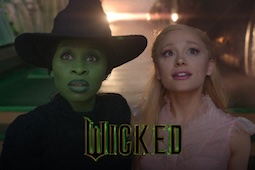
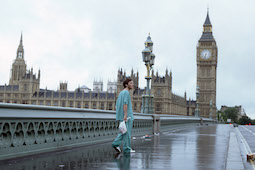
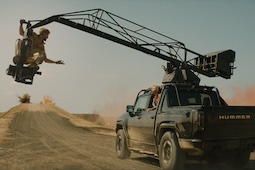

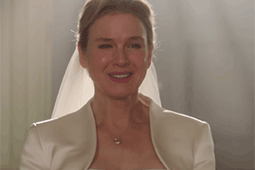

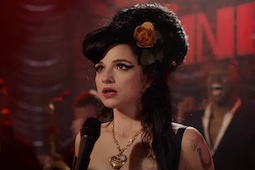
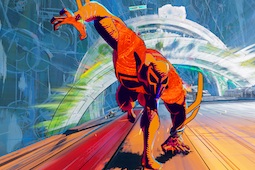

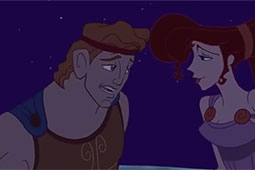



.jpg)
.png)



